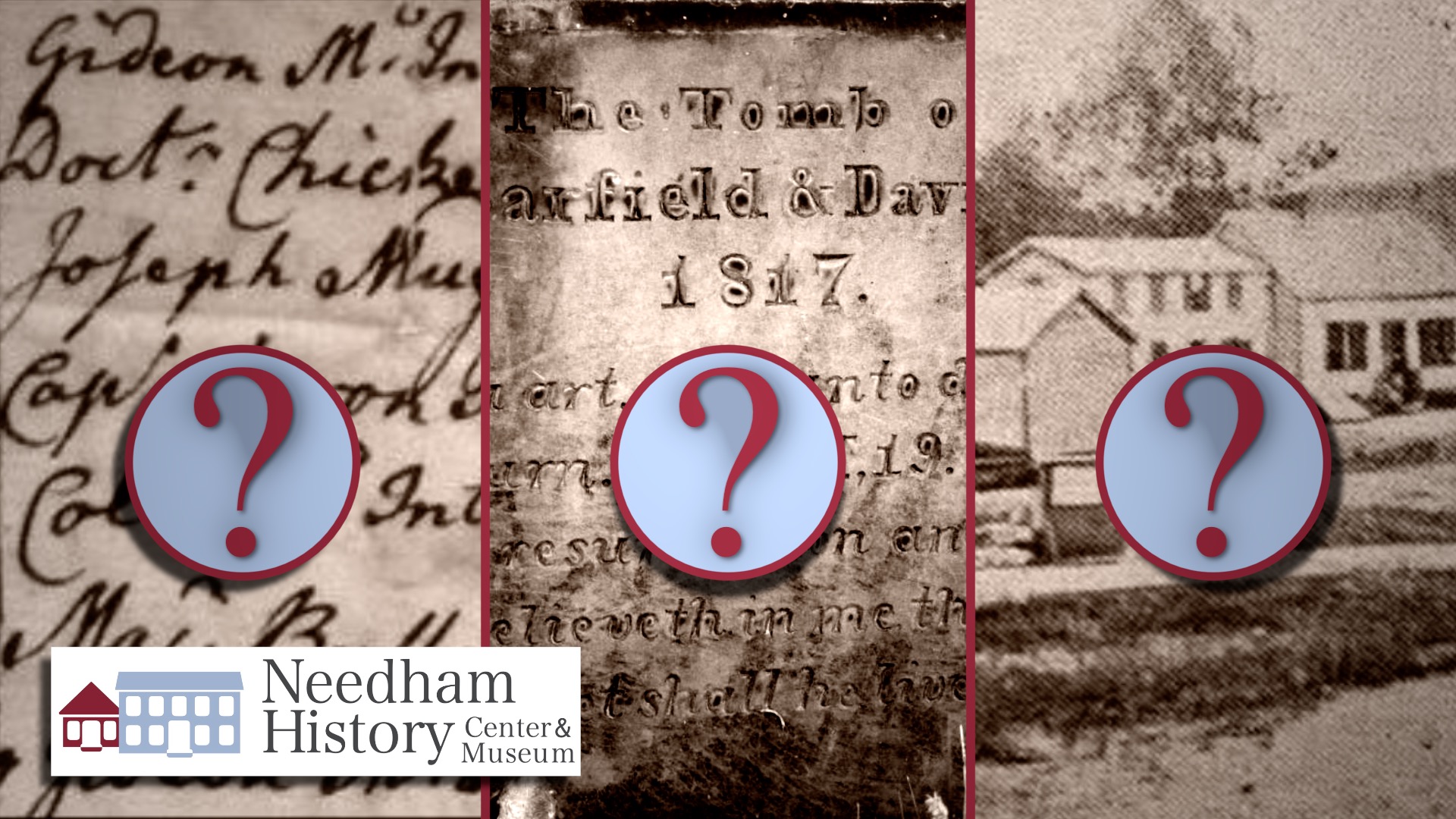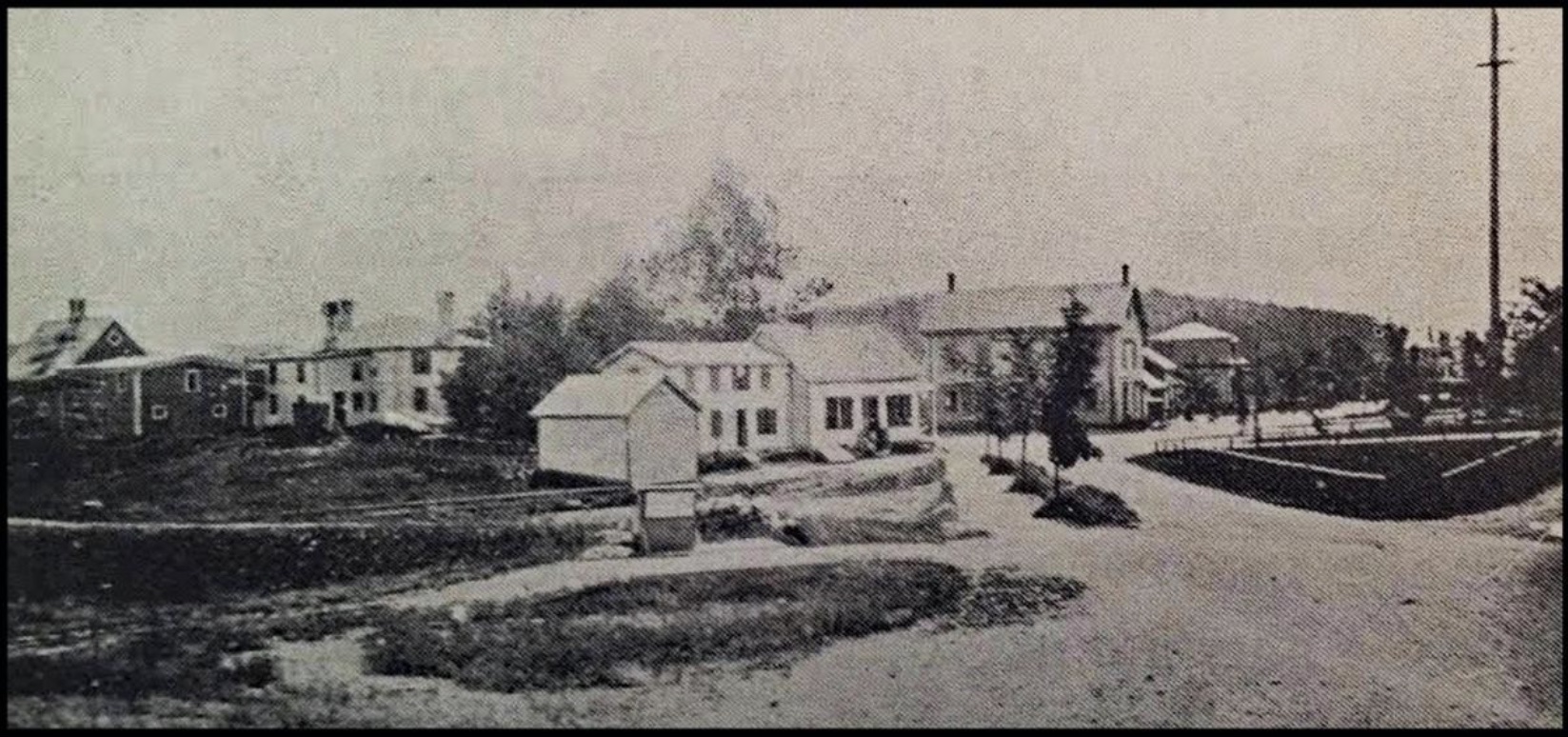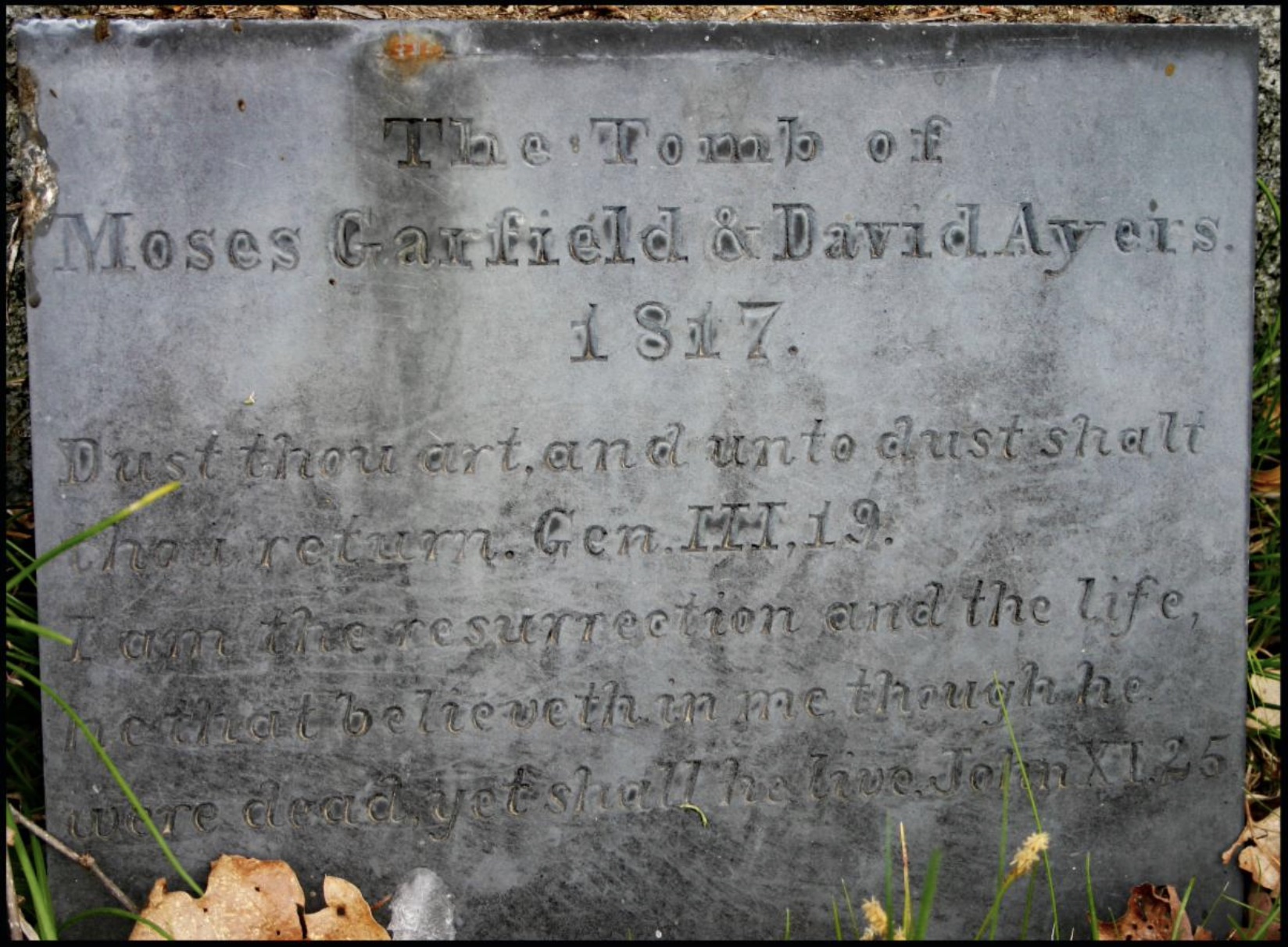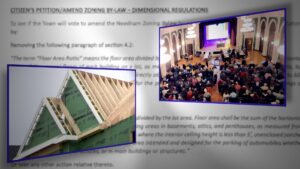
Needham History: History Mysteries! Short Takes
Everyone loves a mystery – except Me! I want to know more!

The oldest known photo of Wellesley Square, taken in the 1870s. This view would have been familiar to Bell. Looking south down Grove Street toward the intersection of Route 16 (the Post Office would be behind you).
History Mysteries! Short Takes
There is a general idea out there that history is “easy,” because everything was written down. Nothing could be farther from the truth. People wrote down (usually) what they thought official, or consequential. Most people did not think to document the Every Day because, well, everyone knew it.
Well, they might have known it Then, but since they didn’t write it down, we are not so well-informed Now. That’s one of the reasons that diaries are so treasured – they tend to record the daily details that otherwise can get lost.
As a result, in our travels through Needham’s history, we often come across events or places that are mentioned only briefly but leave us wanting more. Either they were not important enough to warrant further detail, or they were a minor component of a much larger story. SO they just live out there as what Wikipedia would call “stubs” – bits of information without additional context. Nevertheless, they are little mysteries, tantalizing clues about life in Needham they we may never know in depth. And of course, I always want to know more! Here are a few of my favorites.
“Alexander Graham Bell moved to West Needham to recover from an illness; while teaching deaf students he worked on the telephone here.”
This entry is on the Wellesley Free Library’s “Wellesley History Timeline,” compiled by town historian Beth Hinchliffe. But it is not quite Wellesley’s timeline yet. In 1871 Wellesley was still West Needham, and Alexander Graham Bell was briefly a resident. Bell was born in Edinburgh, and later moved with his family to London. In 1870, the family emigrated to Canada, settling in Brantford, Ontario. Over the next few years, Bell moved between Brantford and the Boston area, where he began to work with deaf students, including Helen Keller. It was around this time that Bell also started working on the mechanics of transmission and receiving systems – experiments that would ultimately result in the telegraph (1875) and the telephone (1876). Bell had been sickly for some time. In 1871, he moved for a while to West Needham to rest and recover, though during that time he did continue with his transmitter experiments. He lived in a house off Washington Street, in the area that is now part of Waterstone Senior Living in Lower Falls.
Bell’s story is obviously a large one – we are all familiar with the telephone, but he had numerous patents on machines and devices that revolutionized communication. A brief stay in Needham may not be a watershed moment in his life, but it is important to us. He had many long stays in Cambridge and Boston. He also had recurring health issues, so this was not a one-time thing. So why did decide on one such occasion to rusticate in Needham? The Library of Congress has a large collection of Bell’s papers, so maybe the answer lies there – but as yet, we don’t know it.

A Tragedy in 1817.
In the Needham Cemetery, in the old section where the raised tombs are, is a flat slate plaque that reads: “The tomb of Moses Garfield & David Ayers 1817.”
David Ayres, Jr. was the son of David Ayres and Sally (Seaverns) Ayres; Sally came to Needham from Weston. David Jr was born on 19 January 1809, and died on 17 May 1817. He was about 8 years old. Moses Garfield was the son of George and Sally Garfield; he was born on 29 May 1810 and was named after his grandfather. The joint tomb implies that he died on the same day as David. He would have been around 7 years old. The Ayres and Garfield families were intermarried, and the two boys were probably cousins.
Two small boys running around on a warm early summer day. You’d like to think that there is nothing more perfect. But not this time. There is no written record of the tragedy, other than this plain slate stone.
Walter Logan, Esq., Refugee.
In the town census of 1777, the Selectmen note that in addition to the 287 white males over the age of 16, there are 6 Black men, and 4 male refugees. Among these four was Walter Logan, Esq. of Roxbury.
Refugees? I assume that their displacement has something to do with the Revolutionary War, but refugees were most often Loyalists who were kicked out of their property. Since Needham had expelled its own Loyalists, including the sons of the late First Parish minister Jonathan Townsend, it could not be considered a Loyalist refuge in 1777.
At any rate, Walter Logan cannot have prospered here, because on 23 November 1785, all of his goods and chattels were sold off at a public auction. This could have been a bankruptcy auction or a probate sale (ie, no heirs), though the description of the auction as “Articles Sold” rather than “Estate of” suggests the former. The auction took place at the tavern, and was presided over by Col. William McIntosh, who was both the innkeeper and a Selectman. The auction brought in 12 pounds and 5 shillings; an equal amount was realized in a private sale of goods that preceded the auction.
Logan’s goods were neither extensive nor grand. The list includes such items as an “Iron Pott and Hook (pott broken)” bought by Major Bullard’s Wife for 1 shilling, dishes (Aaron Smith, 1 shilling and 10 pence), and similar small household goods. Most sold for only a few shillings. A couple of items were worth more – Henry Dewing bought a down featherbed for 3 pounds and 10 shillings.
So all we know about Walter Logan is that he came to Needham in 1777 and was bankrupt (or dead?) in 1785. How he came to be a refugee, and how he fell on such hard times? – that we don’t know.
A detail from the auction ledger from the sale of Walter Logan’s goods, 23 November 1785.

 |
Gloria Polizzotti Greis is the Executive Director of the Needham History Center & Museum. For more information, please see their website at www.needhamhistory.org. |

